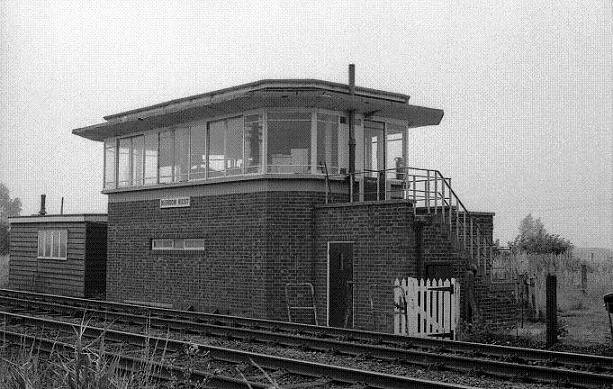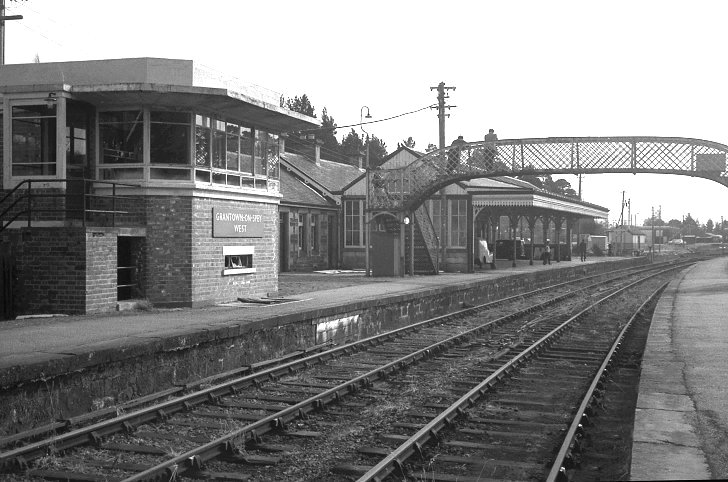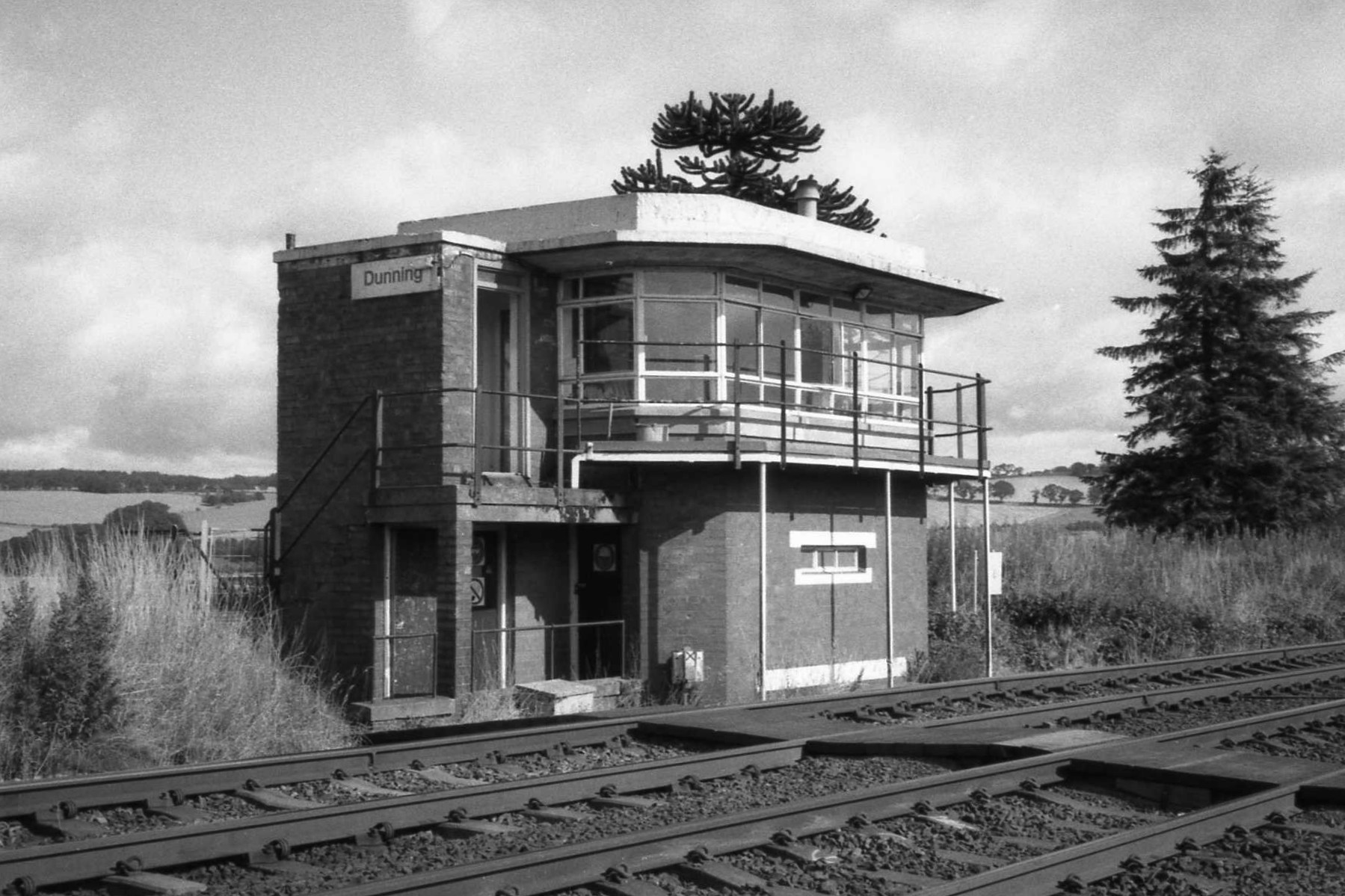
Halfway between Nottingham and Loughborough, we have a rare lesser-spotted LNER Type 15 signalbox; Hotchley Hill.
While admittedly niche, the design is of historical interest, and practically undocumented online. These are my notes.
The LNER Type 15 was a wartime innovation, and the architecture looks the part. The flat concrete roof and narrow locking room window suggest tolerance of fire and shrapnel (if not a direct hit in an air raid), and the bevelled corners are not-quite Art Deco.
Of course, the LNER only lasted a few years after the war, until nationalisation. BR introduced their own "Type 15", which was similar in many ways, but boxier. Signalbox.org claims Type 15s were built from 1948 to 1954, (but see the clipping above)
For all the styling is modern, these are functionally traditional buildings. They controlled the same areas that might be run from a Victorian signalbox. They were fitted with lever-frames, block-shelves, and the rest. Heating was often provided by a coal-burning stove, and the W/C had its own external door.
The lever-frame, relatively speaking, is backwards - worked with your back to the line. This affords greater visibility of the railway, where 'normal' boxes often had a view cluttered with block instruments and the like.
Examples (non-exhaustive), with external links to further information:
- Brunthill nr. Carlisle (1945-?)
- Dunning, nr. Perth (1951-1997)
- Filey Holiday Camp (Butlins) (1947-1977) (==Royal Oak East?)
- Fountainhall, nr. Edinburgh (1954-1969)
- Grantown-on-Spey West, nr. Inverness (1952-198x?)
- Grangetown, Teeside (1954-) (With 1980s NX panel, retrofitted with unusual roof)
- Hampton Hill (Fictional) Bachmann model of Hotchley Hill
- Harrogate North (1947-)
- Holloway North Down, London
- Hotchley Hill, nr Nottingham (1947-1971) In preservation
- Murrow West nr Spalding (1950-) Private dwelling
- Queensferry Jct, Edingburgh. (1949-1978)
- Royal Oak North Jct (1947-1977)(In triplet for Filey Camp)
- Royal Oak South Jct (1947-1977)(In triplet for Filey Camp)
- Spean Bridge, Lochaber (1949-1988) Listed, only Type 15 left in Scotland
- Chadwell Heath (1949?-?)
(Dates are approximate years of operation)
The space under the stairs was used to store both coal and ash. It seems the plan was for ash to be tipped through a hole in the stairs into a bin below - at least at Hotchley Hill, but the exact utility of this seems questionable.
According to the plans for Hotchley Hill, the concrete roof is made from Siegwart precast concrete, and the canopy is waterproofed with Pudlo - both entertaining names for materials, and rarely heard.
Interior photos are rare, but the arrangement of instruments seems to have varied substantially:
- Holloway North Down had wooden block instruments, white lampshades, and a vertical diagram board
- Dunning had BR 'Penguin' block instruments and a slanted diagram board
- Spean Bridge had no blockshelf at all, and a diagram board stuck to the back wall, which was painted eau-de-nil below dado height
- Hotchley Hill had oxford blue skirting boards at the end of its working life, under white walls
- Harrogate had a blockshelf, but the layout had clearly been reduced by the time of the SRS video, in 2015
Lever frames seem to have been repurposed, rather than new, and certainly not standard.
- Harrogate North had a Mackenzie & Holland
- Hotchley Hill had a Saxby & Farmer
Photos
In order, Murrow West, Grantown-on-Spey, Royal Oak South, Chadwell Heath, Dunning





N.B. These photos were available on the public internet, or have been explicitly sent to me. My best knowledge of the author is in each image's description - but proper attribution is often impractical.